 Movies and TV
Movies and TV  Movies and TV
Movies and TV  Creepy
Creepy 10 Lesser-Known Shapeshifter Legends from Around the World
 Animals
Animals 10 Amazing Animal Tales from the Ancient World
 Gaming
Gaming 10 Game Characters Everyone Hated Playing
 Books
Books 10 Famous Writers Who Were Hypocritical
 Humans
Humans 10 of the World’s Toughest Puzzles Solved in Record Time
 Mysteries
Mysteries 10 Scientific Mysteries We Don’t Fully Understand
 Weird Stuff
Weird Stuff 10 Celebrities Who Have Admitted to Alien Encounters
 Our World
Our World 10 Surprising Secrets of Notre Dame Cathedral
 Miscellaneous
Miscellaneous 10 Intriguing Origins of Popular Carnival Rides
 Movies and TV
Movies and TV 10 Actors Dragged out of Retirement for One Key Role
 Creepy
Creepy 10 Lesser-Known Shapeshifter Legends from Around the World
 Animals
Animals 10 Amazing Animal Tales from the Ancient World
Who's Behind Listverse?

Jamie Frater
Head Editor
Jamie founded Listverse due to an insatiable desire to share fascinating, obscure, and bizarre facts. He has been a guest speaker on numerous national radio and television stations and is a five time published author.
More About Us Gaming
Gaming 10 Game Characters Everyone Hated Playing
 Books
Books 10 Famous Writers Who Were Hypocritical
 Humans
Humans 10 of the World’s Toughest Puzzles Solved in Record Time
 Mysteries
Mysteries 10 Scientific Mysteries We Don’t Fully Understand
 Weird Stuff
Weird Stuff 10 Celebrities Who Have Admitted to Alien Encounters
 Our World
Our World 10 Surprising Secrets of Notre Dame Cathedral
 Miscellaneous
Miscellaneous 10 Intriguing Origins of Popular Carnival Rides
10 Truly Devastating Disasters Caused By Sleep Deprivation
Though the reason that we need sleep continues to baffle scientists, there’s no denying that we require it to function efficiently. In the short term, lack of sleep affects judgment, hinders the ability to retain information, and reduces the ability to cope with stress.
Over time, the effects of lack of sleep are much more serious. Cardiovascular disease, obesity, and severe impairment of cognitive functions are just a few of the ways that sleep deprivation prohibits us from achieving our peak performance.
Around 30 percent of the US workforce is clocking less than six hours a night on average, which creates the potential for some serious issues. In fact, some of the biggest disasters in history have stemmed directly from sleep deprivation.
10 Exxon Valdez Oil Spill
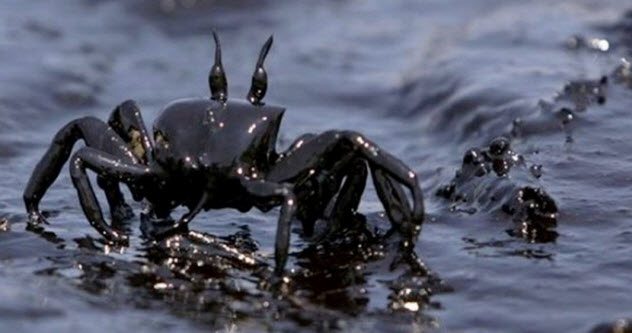
Anyone who has driven for too long or without enough sleep can attest to how difficult it is to stay within those narrow painted lines on the road. Imagine the consequences of being at the helm of an oil supertanker with hardly any sleep at all. The results are just as you would expect.
Considered to be one of the worst environmental disasters of all time, the Exxon Valdez oil spill dumped almost 42 million liters (11 million gal) of oil into Prince William Sound off the coast of Alaska on March 24, 1989. The vessel was headed for Long Beach, California, on a route that the Exxon Shipping Company had traversed over 8,700 times in the previous 12 years. So this disaster came as a total surprise, although maybe it shouldn’t have.
Captain Joseph Hazelwood was ultimately responsible for navigating the 300-meter (987 ft) ship through familiar waters to its destination. Unfortunately, the captain had downed a few drinks more than he should have and wound up turning over the helm to sleep-deprived Third Mate Gregory Cousins.[1]
Cousins was barely functioning because he had slept only six hours in the previous two days. Shortly after midnight, the Exxon Valdez collided with Bligh Reef, a well-known hazard on this route, which ruptured 8 of the vessel’s 11 cargo tanks. The supertanker called for help immediately, but it didn’t matter. Though there were no human lives lost, the damage to the environment and wildlife was already done.
The Exxon Valdez spill continues to hold the No. 1 spot for the costliest maritime accident of all time. Hundreds of miles of coastline were completely destroyed along with the ecosystem there.
9 Three Mile Island Accident
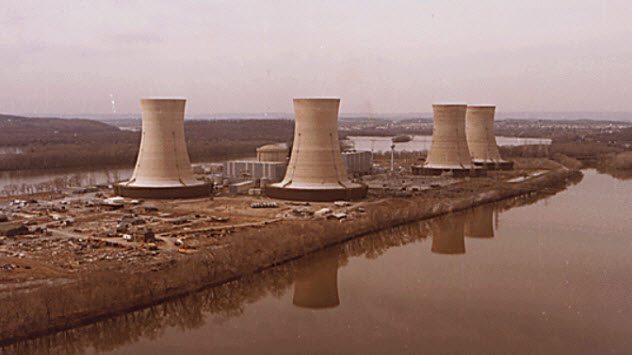
At approximately 4:00 AM on March 28, 1979, an avoidable accident occurred at the Three Mile Island nuclear reactor. A valve became stuck open in the secondary nonnuclear section of the plant and began to leak coolant everywhere.
The valve had opened automatically to relieve the pressure after a mechanical failure had prevented water from reaching the steam generators, which was intended to keep the reactors cool. The valve should have closed on its own when the pressure was stabilized, but it did not. Instruments in the control room showed the valve as closed. By the time the crew was able to locate the source of the problem, the reactor’s core had melted.[2]
Unaware that they were dealing with a cooling problem, crew members ultimately made decisions that worsened the situation. The problem was complex enough, but when fatigue was added into the mix, they had the perfect recipe for disaster. Investigators eventually ruled that sleep deprivation was a significant factor.
The aftermath was devastating. It took 12 years to clean up the mess and cost around $1 billion. Hundreds were sickened within the immediate area, and many animals and plants perished. The TMI-2 reactor has since been shut down permanently.
8 The Grounding Of The Star Princess Cruise Ship
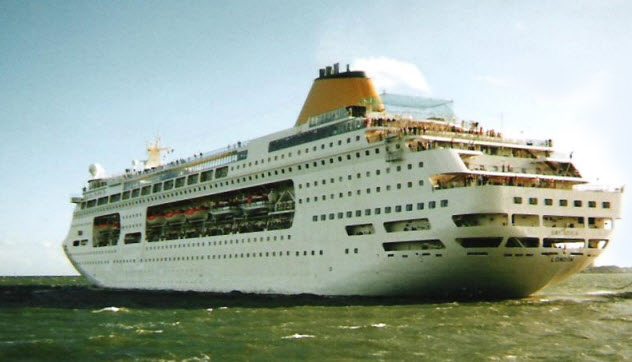
In June 1995, passengers on the Star Princess, a Liberian cruise ship, likely had a very different idea of what they were in for when they boarded the 246-meter (806 ft) vessel just five days earlier. The seven-day cruise from Vancouver to Skagway, Alaska, was cut short on the fifth day when it ran into Poundstone Rock, 40 kilometers (25 mi) from Juneau.
Though the Star Princess sustained some serious damage to its starboard side, its bottom, and its oil tanks—which ruptured and spilled about 19 liters (5 gal) of oil—there were no injuries to the crew or the 1,568 passengers aboard.
The National Transportation Safety Board determined that the grounding of the Star Princess was due to pilot performance, citing fatigue from sleep apnea.[3]
7 The Challenger Explosion
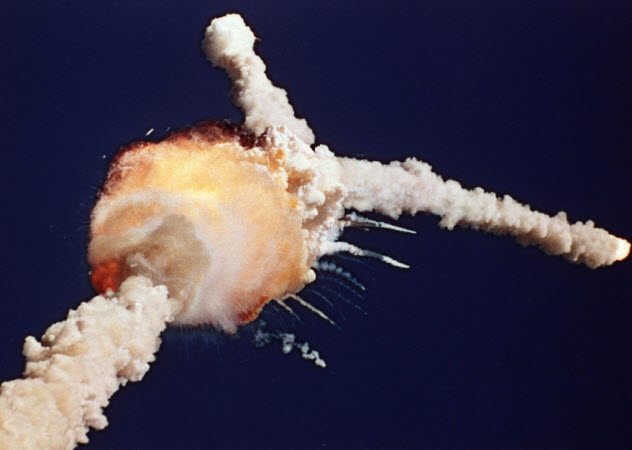
It takes a lot of preparation to launch a shuttle into space, which results in many sleepless nights and long days for crew and support staff alike.
On January 28, 1986, the Challenger launched from Cape Canaveral, Florida. Seventy-three seconds later, it exploded, killing all seven people aboard as the world watched in horror. In the aftermath, it was concluded that poor judgment due to sleep loss was a contributing factor.
The top managers had been on duty since 1:00 AM the day of the launch after having had only a couple of hours of sleep the previous night.[4] This made it all too easy for mistakes to be made. Tragically, these mistakes resulted in a fatal outcome.
6 Air France Flight 447
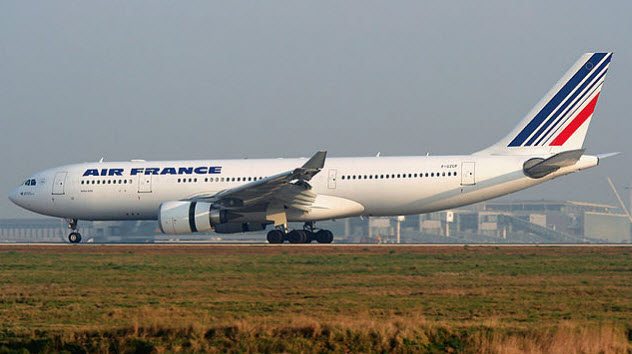
Air France Flight 447 was a routine passenger flight that left Rio de Janeiro and headed for Paris on June 1, 2009. Four hours later, the plane crashed, killing everyone aboard. So how did a routine flight suddenly—and without any warning—simply fall from the sky?
Everything started off normal. The crew was coming off a three-day layover in Rio de Janeiro. Captain Marc Dubois and his copilots, Pierre-Cedric Bonin and David Robert, should have been fully rested. But that was not the case. It was revealed later that the captain had slept only one hour the night before the flight and the two copilots were not any better off.
The first four hours went smoothly for the tired crew. So smoothly, in fact, that the captain decided to take a nap in a bunk behind the cockpit. The nap was scheduled, and everything should have been fine.
But when the flight ran into a band of thunderstorms and turbulence soon afterward, it took the captain over a minute to get back to the cockpit. That minute was likely the difference between stabilizing the aircraft and the 11,600-meter (38,000 ft) plunge that it ultimately took in a span of three-and-a-half minutes.
The tired copilots overcorrected when sensors iced over and the autopilot disengaged. They took the aircraft rapidly from 11,000 meters (36,000 ft) to 11,600 meters (38,000 ft) before it stalled.[5] By the time the captain reached the cockpit, it was too late and all 228 passengers and crew perished within minutes.
5 Great Heck High-Speed Train Crash
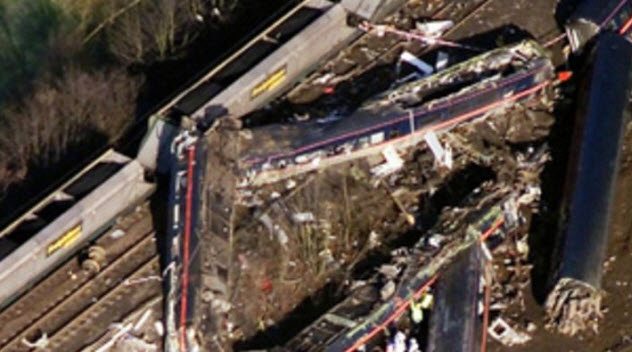
The Great Heck rail crash is the worst UK rail disaster of the 21st century. It is also known as the Selby rail crash in a nod to the town near the site of the tragedy.
On February 28, 2001, Gary Hart fell asleep while driving a Land Rover that was pulling a trailer on the M62. He had had little to no sleep the night before. His vehicle veered off the roadway and down a steep embankment before coming to rest on the railway track.
Hart was able to make it out of his vehicle just 60 seconds before a passenger train struck it and derailed. Shortly after, a second train traveling northbound plowed into the wreckage.[6]
Hart called for help immediately, but it was too late. The crash claimed 10 lives that morning: six passengers and four railway crew members. More than 80 people were also injured. Hart was sentenced to five years in prison after being found guilty of 10 counts of causing death by dangerous driving.
4 American Airlines Flight 1420 Crash
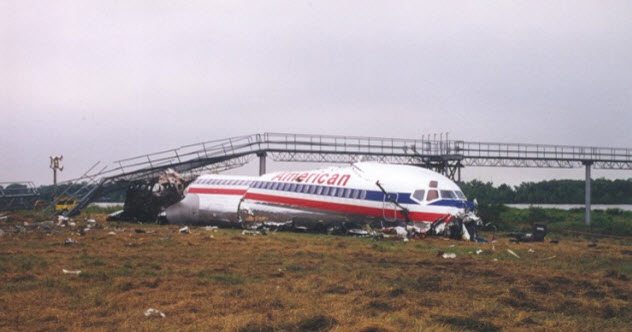
Though weather played a significant role in the crash of American Airlines Flight 1420, a better-rested pilot could have turned the whole thing around. Flight 1420 left Dallas–Fort Worth International Airport on June 1, 1999, for Little Rock National Airport.
The crew received information mid-flight about severe thunderstorms on their route. In an attempt to outrun the bad weather, they made some landing decisions that caused them to overshoot the runway altogether. The crew was in a hurry to reach their destination, so they refused to discontinue their approach at Little Rock despite the stormy weather. In addition, they did not ensure that the spoilers had fully extended after touching down.
The National Transportation Safety Board determined that judgment impairment stemming from fatigue and situational stress played a role in the crash. Ten passengers and the captain were killed as the plane struck several tubes 125 meters (411 ft) beyond the runway, passed through a chain link fence, and went over a rock embankment before colliding with a lighting system. The first officer, the flight attendants, and 105 passengers were also injured.[7]
The plane was destroyed in a post-crash fire.
3 Gas Leak In Bhopal, India
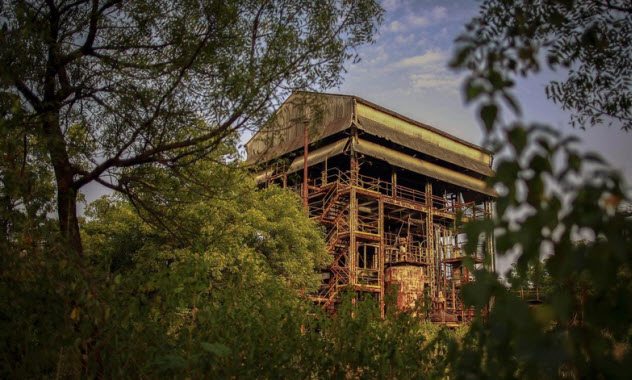
On December 2, 1984, the citizens of Bhopal went to bed unaware that many of them would never wake up. As they slept, one of the storage tanks at the Union Carbide India Limited pesticide plant began to leak.
A faulty valve allowed water into the tank, and pressure quickly rose to catastrophic levels. At around 1:00 AM on December 3, a loud rumbling was heard from the plant as the safety valve inevitably gave out. A plume of methyl isocyanate spilled into the air, and 3,800 people died instantly.[8]
Drowsy workers in the middle of the night were cited as one of the causes of the unfortunate domino effect that resulted in this tragedy. Approximately 15,000 people died and 600,000 were left with serious injuries ranging from respiratory problems to blindness.
2 Michigan Train Wreck
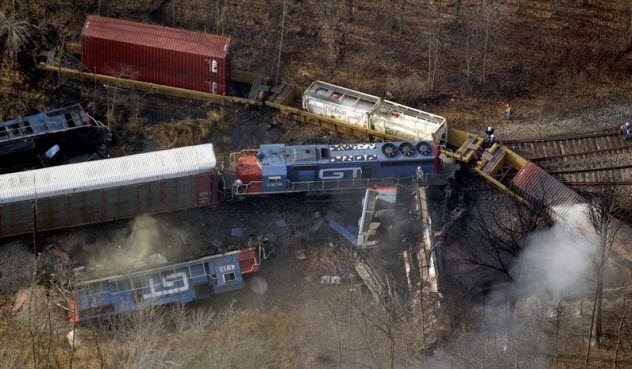
The early morning quiet on November 15, 2001, was shattered when two Canadian National–Illinois Central freight trains crashed around Clarkston, Michigan. The operators of the southbound train had failed to acknowledge stop signals that indicated another train was approaching from the north. Traveling at 21 kilometers per hour (13 mph), the southbound train proceeded onto the mainline track and the two vehicles collided.
At the time, no one knew that two crew members had been previously diagnosed with obstructive sleep apnea. Neither engineer Allen Yash nor conductor Jesse Enriquez of the southbound train had informed his employer of his condition. Neither man had been successfully treated for the condition, either.
The National Transportation Safety Board cited the crew members’ fatigue as the cause of the accident, which claimed the lives of both the conductor and the engineer of the northbound train. Yash and Enriquez were hospitalized. Around 11,400 liters (3,000 gal) of diesel fuel were leaked onto the tracks and surrounding area, which cost $1.4 million to clean up.[9]
1 Chernobyl
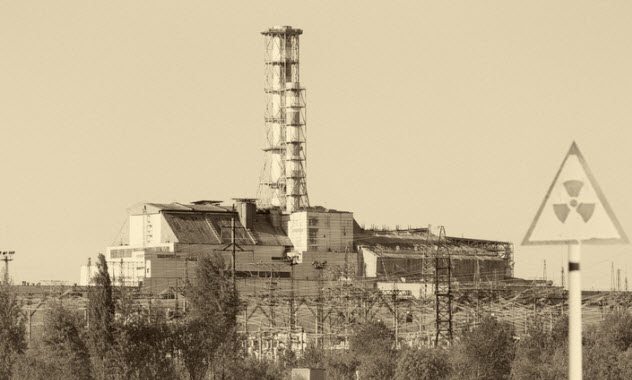
Perhaps the best-known disaster on this list, the Chernobyl accident occurred on April 26, 1986. Due to a series of mistakes by plant operators, the No. 4 reactor was running on dangerously low power, which left it unstable.
The previous day, the crew had been preparing to test how long the turbines would supply power to the main pumps after a power loss. Seconds after the scheduled shutdown, a power surge occurred, resulting in a massive chemical explosion. The blast was so powerful that it blew the 1,000-ton cover off the reactor.
One person was killed instantly in the explosion, and a second died at the hospital from serious injuries. Twenty-eight others died within a few months from acute radiation syndrome. Fatigued workers making preventable mistakes contributed to the largest nuclear accident that the world has ever seen.
The fallout was catastrophic. Within 36 hours of the explosion, people were evacuated from the surrounding area. Although the exact death toll is still uncertain, the official number of deaths is 31. But it’s unclear how many have died from cancer caused by radiation exposure. The 600,000 workers involved with trying to contain the disaster were all exposed, as were the 116,000 people evacuated from the 30-kilometer (18 mi) radius around the plant.[10]
As of 2017, Chernobyl serves as an eerie, post-apocalyptic tourist attraction that sits frozen in time and reclaimed by nature.
Melynda Sorrels is a writer, student, reckless blogger, dreamer, and an aficionado of all things funny or caffeinated.
Read about more tragic disasters that might have been averted on 10 Disasters That Sparked New Safety Regulations and 10 Deadly Disasters We Should Have Seen Coming.








